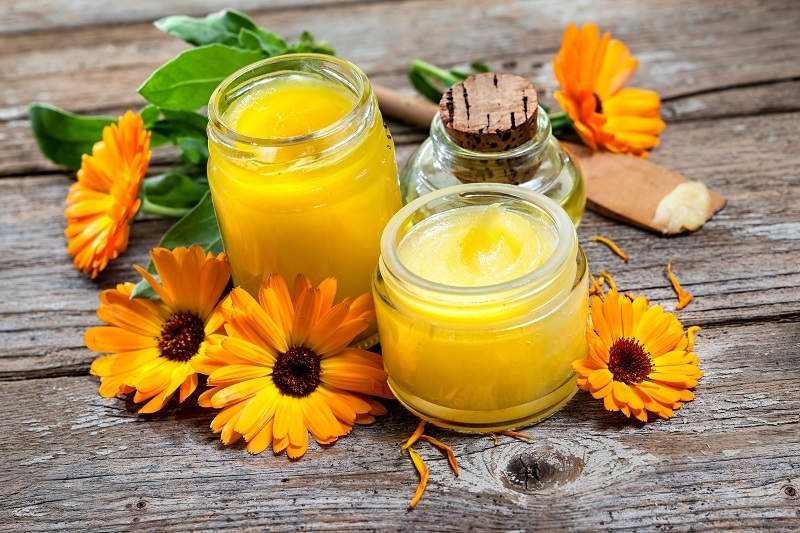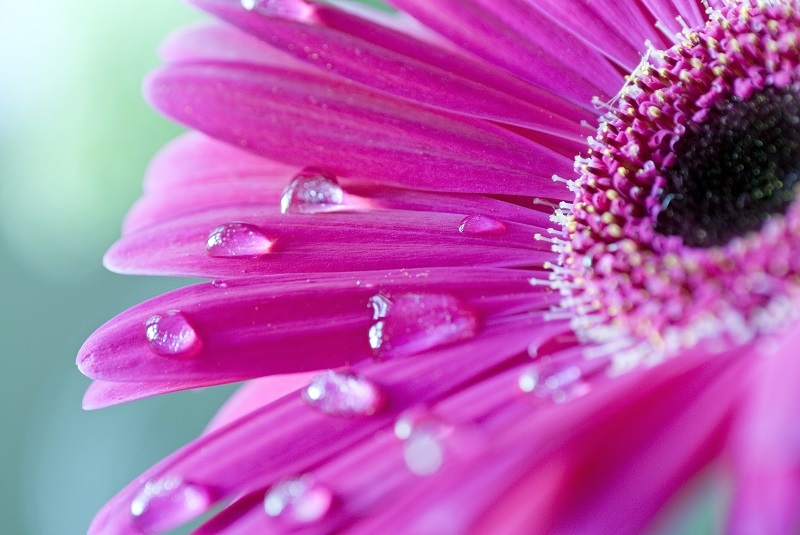Discover the Hidden Secrets of Sunflowers
Posted on 14/08/2025
Discover the Hidden Secrets of Sunflowers
Sunflowers are far more fascinating and complex than their bright yellow petals might initially suggest. These radiant plants have inspired art, science, and agriculture for centuries. This article will take you on a journey through the lesser-known aspects of sunflowers, unveiling their hidden secrets and showcasing why these blooms hold a special place in human culture and nature's design.

What Makes Sunflowers Unique?
Sunflowers (Helianthus annuus) may appear simple at first glance, but beneath their cheerful appearance, lies a multitude of fascinating biological, historical, and cultural attributes. Here's what sets these plants apart:
- Heliotropism: Young sunflowers exhibit a remarkable behavior called heliotropism, which means they track the sun's movement from east to west across the sky during the day.
- Multipurpose Utility: Every part of the sunflower has a use, from seeds and oils to fibers and leaves.
- Historical Symbolism: Sunflowers have played significant roles in art, religion, and culture worldwide, often representing adoration, loyalty, and joy.
- Biodiversity Magnet: These flowers attract a variety of pollinators and play a vital role in their ecosystems.
- Phytoremediation Power: Sunflowers have the ability to clean and restore polluted soil, making them valuable in environmental conservation efforts.
The Marvel of Heliotropism
One of the most astounding hidden secrets of sunflowers is their ability to move in response to the sun -- a behavior scientifically termed as heliotropism. Young sunflowers, known as flower heads, follow the sun's trajectory during the day:
- Morning: They face east to greet the rising sun.
- Throughout the Day: The stalks gently rotate, tracking the sun's progress.
- Evening: By sunset, the blooms are turned westward.
At night, sunflowers reorient themselves back east, preparing for the next sunrise in a process called circadian rhythm. Mature sunflowers, however, stop this movement and remain facing east, which maximizes their warmth and attracts more pollinators such as bees.
The Anatomy of a Sunflower: More Than Meets the Eye
What appears as a single large bloom is actually a complex structure. The head of a sunflower is composed of up to 2,000 individual flowers -- the outer petals are ray flowers, while the center disk consists of tiny, spiraled disk flowers, each capable of producing a seed. This ingenious design maximizes pollination and seed production.
The Golden Ratio and Sunflowers
The spiral arrangement in the sunflower's seed pattern is not random; it follows the Fibonacci sequence, also called the golden ratio. This mathematical pattern is nature's most efficient way to pack seeds tightly together, allowing more seeds to fit within the flower head without overcrowding. This pattern is not only a marvel of natural engineering but also a source of inspiration for artists and mathematicians alike.
The Secret Lives of Sunflowers: Ecosystem Benefits
Sunflowers aren't just beautiful; they are essential for many organisms. Their nectar-rich blooms and abundant seeds provide food for pollinators, birds, and small mammals. Here are some critical ecosystem roles played by sunflowers:
- Attracting bees, butterflies, and other pollinators
- Providing nourishment for birds like finches and sparrows via their high-fat seeds
- Hosting beneficial insects that help control pests in the environment
Natural Pest Control
Did you know sunflowers also act as a natural pest deterrent? Their tall stalks offer shelter for insects that prey on garden pests, like ladybugs and lacewings, helping maintain a natural balance in gardens and farms.
Unveiling the Cultural Significance of Sunflowers
The hidden secrets of sunflowers extend to culture and human history. Originating in North America, they were first domesticated by indigenous peoples over 4,500 years ago. These communities used sunflowers for:
- Food, with seeds eaten raw or ground into flour
- Medicinal purposes, to soothe various ailments
- Dye, using petals and pollen for vibrant colors
- Oil, extracted from seeds for culinary and ceremonial uses
Sunflowers in Art and Literature
Few flowers are as celebrated in art as the sunflower. The most iconic example is Vincent van Gogh's "Sunflowers" series, where he captured the flower's vibrance and beauty. In literature, sunflowers often symbolize loyalty, longevity, and the pursuit of happiness -- qualities inspired by their unwavering quest for light.
Sunflowers as National Symbols
Ukraine embraces the sunflower as a symbol of peace and prosperity. Its cultural and economic significance to the country runs deep, making the sunflower an emblem of resilience and hope.
The Commercial and Practical Uses of Sunflowers
Beyond their beauty, sunflowers have significant practical and commercial value. Here are some key uses:
- Edible Seeds: Sunflower seeds are a healthy snack, packed with vitamins, minerals, and fats.
- Sunflower Oil: Widely used for cooking due to its neutral flavor and high smoke point. Sunflower oil is also utilized in cosmetic and skincare products for its nourishing properties.
- Livestock Feed: The byproducts from oil extraction serve as nutritious feed for livestock.
- Biofuel: Sunflower oil is increasingly explored as a source of environmentally friendly biofuel.
Phytoremediation: Nature's Cleanup Crew
Among the most remarkable secrets of sunflowers is their ability to absorb toxic substances from soil, such as heavy metals and radioactive contaminants. This process, known as phytoremediation, has been used in sites like Chernobyl and Fukushima to help restore contaminated land. Sunflowers' robust root systems make them perfect candidates for cleansing polluted environments and facilitating ecological health.
The Science Behind Sunflower Growth
Curious how sunflowers can reach heights of up to 12 feet in just a few months? Their rapid growth is driven by:
- Photosynthetic Efficiency: Large leaves and extensive root systems maximize energy uptake.
- Genetic Diversity: Thousands of years of cultivation have led to robust sunflower varieties with different sizes, bloom times, and resilience to pests and diseases.
- Adaptability: Sunflowers thrive in a wide range of soils and climates, making them ideal for both home gardens and commercial agriculture.
The Importance of Sun Exposure
For sunflowers, sunlight isn't just beneficial -- it's essential. These plants are heliophilous, which means they truly love the sun. They require full sun for at least six hours a day to thrive and produce healthy blooms. This love for light is the very reason behind their unique eastward orientation and growth habits.
Growing Sunflowers: Tips and Surprising Advice
If you're inspired to welcome the hidden secrets of sunflowers into your home or garden, here are some essential tips:
- Start with Quality Seeds: Choose varieties fit for your climate and desired plant height.
- Plant in Direct Sunlight: Ensure at least 6-8 hours of direct sun for rapid, healthy growth.
- Space Them Out: Sunflowers can become quite large, so give each plant plenty of room to avoid competition for nutrients and light.
- Regular Watering: Keep the soil moist, especially during germination, but don't let it become waterlogged.
- Support Tall Varieties: For giant sunflowers, consider staking the stems to prevent wind damage.
- Watch for Pests: Aphids, birds, and squirrels love sunflower seeds, so protect heads as they mature.
Harvesting and Seed Saving
Wait until the backs of the flower heads turn brown before cutting them for seeds. Hang the heads upside down in a dry, well-ventilated place. Then, rub them gently to release the seeds for roasting or replanting the following season -- a fun way to continue the sunflower's legacy!
Unexpected Sunflower Facts You Probably Didn't Know
- Sunflowers come in more colors than yellow! Varieties range from deep red and orange to pale creams and vibrant multi-tones.
- The tallest sunflower on record reached an astonishing 30 feet and 1 inch (9.17 meters).
- Despite their name, sunflowers are native to the Americas, not Europe or Asia. Spanish explorers introduced them to Europe in the 16th century.
- Sunflower oil accounts for a significant portion of global vegetable oil production.
- The sunflower is officially the state flower of Kansas in the United States.
Nutritional and Health Benefits of Sunflowers
Sunflower seeds are a nutritional powerhouse, rich in healthy fats, protein, vitamin E, selenium, and other essential nutrients. They support heart health, improve skin, boost immunity, and promote healthy brain function. Sunflower oil, cold-pressed and unrefined, is particularly valued for its high unsaturated fat content and antioxidant properties.
Incorporating Sunflowers into Your Diet
Add roasted sunflower seeds to salads, yogurt, or trail mixes. You can also substitute sunflower butter for peanut butter. Sunflower microgreens, sprouted from the seeds, make a tasty and nutrient-rich addition to sandwiches and salads.

The Symbolism and Spiritual Energy of Sunflowers
Beyond the tangible benefits, sunflowers are often seen as symbols of happiness, vitality, and hope. Many cultures associate the sunflower with spiritual faith, considering its daily sun-worship to be a metaphor for seeking enlightenment and personal growth. Displaying sunflowers in your home is thought to bring positive energy and joy.
Conclusion: Sunflowers -- Nature's Best-Kept Secret
When you discover the hidden secrets of sunflowers, you find a plant that is not just beautiful but full of purpose, history, and practicality. From mathematical marvels and environmental cleanups to artistic inspiration and nutritional goodness, the sunflower stands as a true icon of resilience and splendor in nature. Next time you see a sunflower, remember -- beneath those golden petals is a world of remarkable secrets waiting to be explored.
Latest Posts
Tips for Nurturing Beautiful Hydrangeas
The Essential Orchid Care Blueprint
Master the Art of Preserving Cut Flowers
Discover the Hidden Secrets of Sunflowers
Exploring the Rich Symbolism of Peony Flowers in Various Cultures





